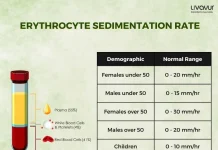This article has been reviewed by experts

The expectation is that doctors will soon be able to test patients at the General Practitioner’s office or in an emergency and determine immediately whether their illness is brought on by a virus or bacteria. Molecular techniques are enhancing doctors’ ability to identify viral or bacterial infections more rapidly and efficiently.
It’s crucial to understand the difference between a viral and bacterial infection so that doctors can treat the appropriate sickness and avoid overusing antibiotics, which fuels the emergence of antibiotic-resistant superbugs.
It’s also the reason why you shouldn’t anticipate your doctor to recommend antibiotics if you have a viral infection, like a cold. [1]
What are Bacteria?
Microorganisms with only one cell, bacteria are microscopic living things. A single one is referred to as a “bacterium.” Everywhere in the world, including inside of your body, there are millions, if not billions, of various kinds of bacteria. Your skin, airways, and mouth are all covered with them. Additionally, they reside in the urinary tract, reproductive, and digestive systems of your body. In your body, according to scientists, there are ten times as many bacteria as human cells.
Gram-positive and Gram-negative bacteria are the two main categories of microorganisms. The additional outer membrane found in Gram-negative bacteria is the primary distinction. It functions as an additional layer of defence, making it more difficult for antibiotics to enter and kill Gram-negative bacteria. This makes them more resistant to antibiotics and more difficult to eradicate.
Most commonly, bacteria reproduce through binary fission, which involves replicating their DNA twice, placing one copy on one side of the cell, and the other copy on the opposite side, which results in the formation of two daughter cells. Between 20 and 60 minutes pass during this doubling process.[1, 2]
Bacteria can enter a person’s body through contact with other individuals, food, or the environment. The infections brought on by these germs. Examples include:
- Strep Throat
- Tuberculosis
- Salmonellosis
- Tetanus
Antibiotics are drugs that either kill bacteria or stop them from doing the things they need to do to survive or thrive. [3]
What are Viruses?
A virus is an amalgamation of many molecules, including genetic material (either single- or double-stranded DNA or RNA), a protein coat, and occasionally an envelope made of fat. They can take on a variety of sizes and shapes, including spirals, cylinders, balls, and spacecraft designs.
Simple hand washing can more effectively kill viruses that are encased in a layer of fat, such as SARS-CoV-2, which produces COVID-19, since soap disrupts this fatty layer.
Viruses aren’t called “living” because they can’t reproduce on their own (unlike bacteria), but they can persist on surfaces for varied lengths of time. In order to proliferate, viruses need to penetrate a living cell (such as a human cell). Once inside, they seize control of the entire cellular infrastructure and force the cell to manufacture new viruses. [1]

How are Viruses Different from Bacteria?
There are various types of germs, or microorganisms, including bacteria and viruses. Both can result in infections, which might create symptoms that are similar. However, the therapy for bacterial infections and viral infections differs.
- Form of Treatment: Some bacterial infections may be treated by healthcare professionals using antibiotics. But viruses are immune to antibiotics. Many viral infections have no particular treatment. Symptoms are usually the main focus of treatment while your body fights the infection. This can include using OTC decongestants to aid with a runny or stuffy nose, sucking on a throat medicine to help alleviate a painful throat, drinking water to prevent dehydration, getting plenty of rest, utilising OTC pain drugs to treat aches, pains, and fever. Antivirals may be used by providers to treat some viruses, however they cannot treat illnesses brought on by bacteria. [2, 3]
- Form of Transmission: Many bacterial illnesses can spread from person to person because they are infectious. Close contact with an infected person, including touching and kissing, contact with an infected person’s bodily fluids, especially after sexual contact or when the person coughs or sneezes, transmission from a mother to child during pregnancy or childbirth, and coming into contact with surfaces contaminated with the bacteria, like doorknobs or tap handles and then touching your face, nose or mouth are just a few ways this can happen. Bacterial illnesses can spread not only from one person to another but also from the biting of an infected insect. Consuming contaminated food or drink can also result in a spread of the infection.
- Many viral infections can spread to other people, just like bacterial infections can. Many of the same methods can be used to spread them from one person to another, including close contact with an infected person, coming into contact with their bodily fluids, passing the virus from a mother to her unborn child, and coming into contact with contaminated surfaces. Additionally, like bacterial diseases, viral infections can also spread through the consumption of contaminated food or water, insect bites, or contaminated surfaces.
- Form of Diagnosis: Based on your medical history and your symptoms, your doctor might occasionally be able to identify your disease. Certain illnesses like measles or chickenpox have extremely recognisable symptoms that may be identified with a straightforward physical check.
- Your doctor will also take into account any current epidemics of a certain disease when making a diagnosis. An illustration would be the seasonal epidemics of influenza that occur each winter. Your doctor may take a sample to culture to determine the sort of organism that may be the root of your disease. Depending on the suspected ailment, different samples can be utilised for culture, however, they can include: Blood, sputum, mucus, stools, skin, and cerebral spinal fluid. Your doctor can determine the cause of your ailment when a bacterium is cultured. It can also assist them in figuring out which antibiotic would be beneficial in treating your condition if you have a bacterial infection.
FAQs
What is the primary difference between bacteria and viruses?
Bacteria are single-celled organisms that can live independently and carry out all necessary functions for survival, while viruses are not considered living organisms and require a host cell to replicate.
How do bacteria and viruses differ in structure?
Bacteria are structurally more complex, with a cell wall, cell membrane, and cytoplasm. They can be found in various shapes (rod, cocci, spiral). In contrast, viruses consist of genetic material (either DNA or RNA) surrounded by a protein coat (capsid) and sometimes a lipid envelope. They lack cellular structures.
What is the mode of reproduction for bacteria and viruses?
Bacteria reproduce through binary fission, a form of asexual reproduction where a single cell divides into two identical daughter cells. Viruses, on the other hand, cannot reproduce on their own and rely on infecting a host cell. They inject their genetic material into the host cell, hijacking its machinery to replicate and produce new virus particles.
Disclaimer: This article is written from a health and lifestyle perspective. It is for general information and not meant to substitute any medical advice. Please consult your doctor for appropriate medical consultation.

















